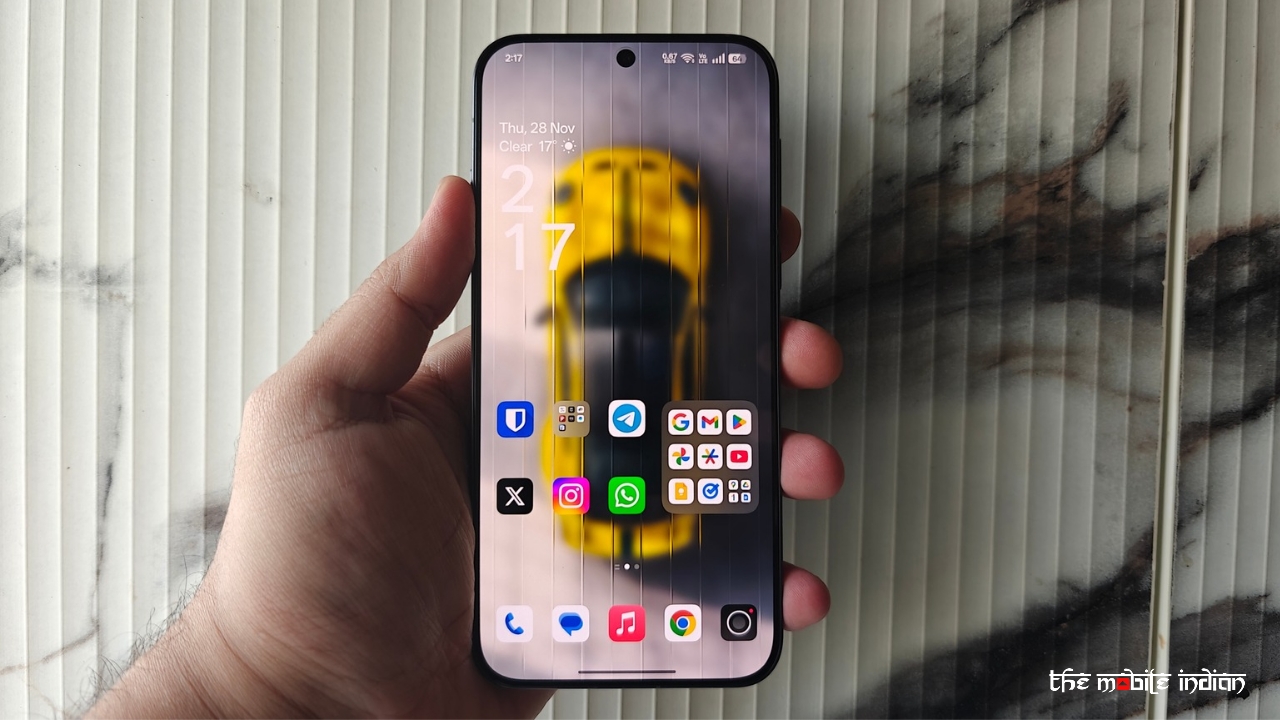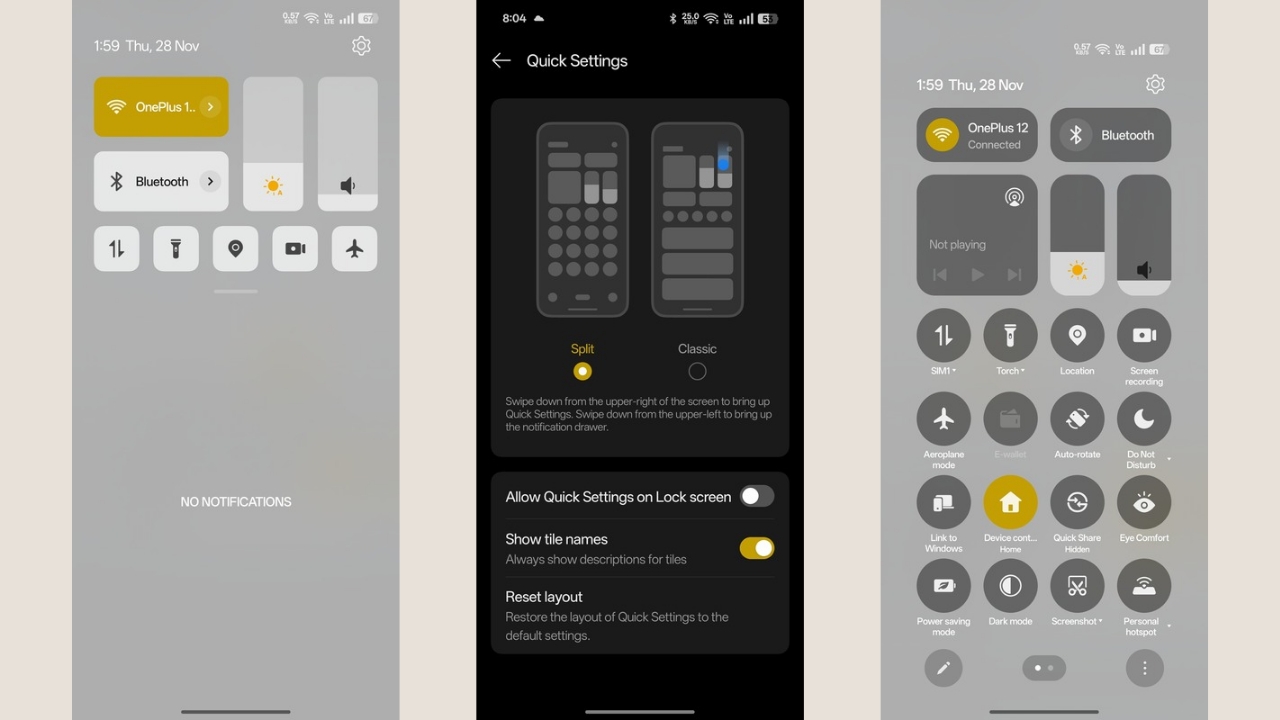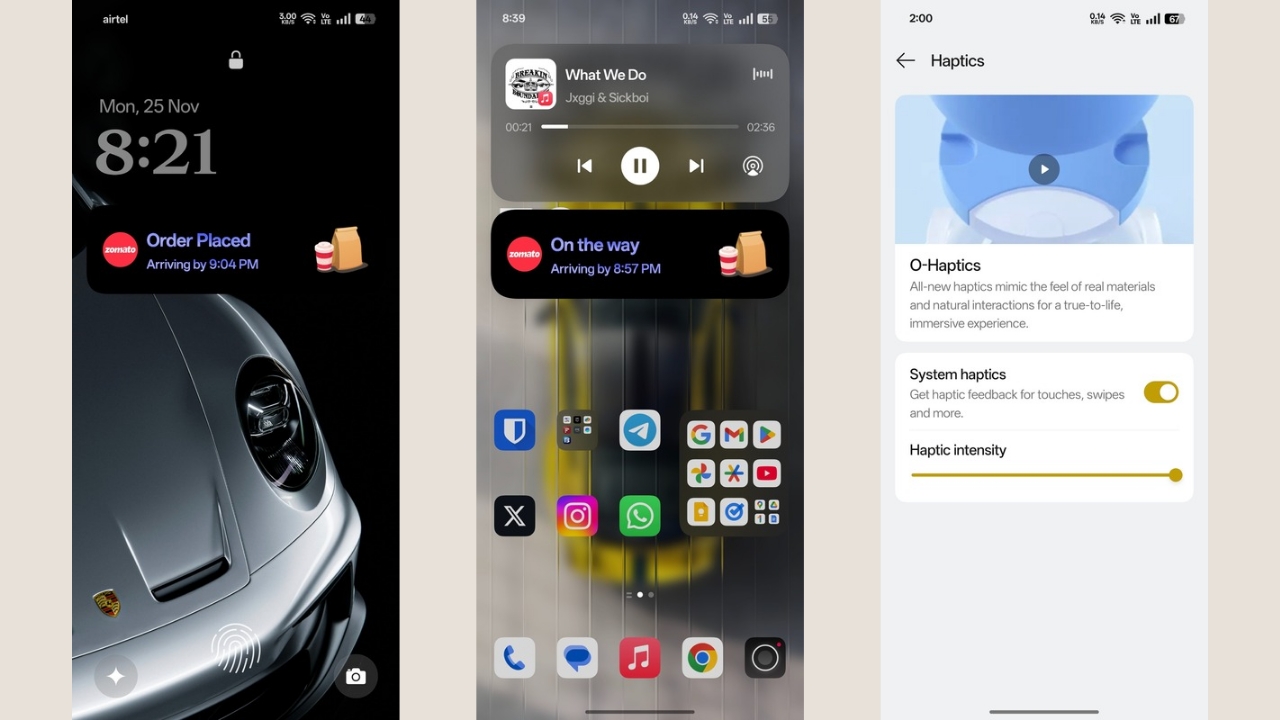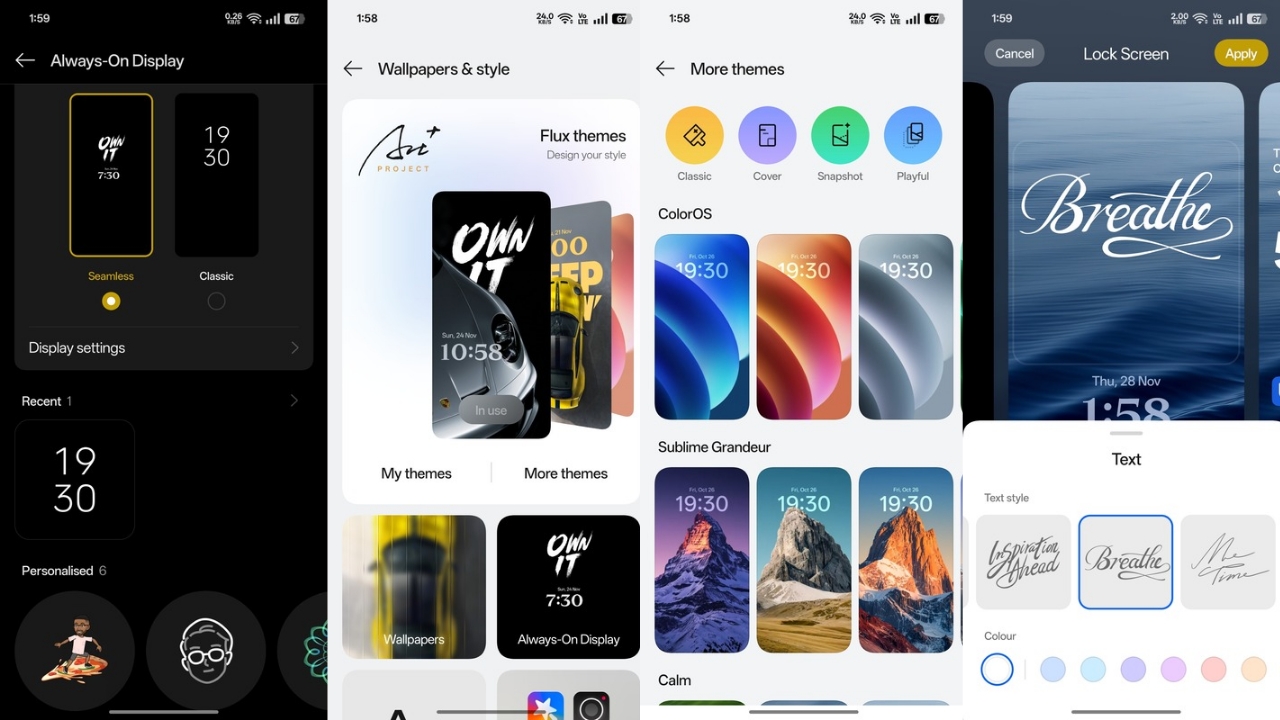The Oppo Find X series has returned to India after a 3-year gap with the Find X8 series. While we have already reviewed the camera of the Find X8, here’s a detailed Oppo Find X8 review, by the end of which you’ll know whether the device is apt for your use case or not.
Design & Display

As I mentioned in the initial impressions of the device, it exudes a polished, premium feel in hand. Due to its similar camera module design, it draws comparisons to last year’s Find N3 and the OnePlus Open. The device’s frame, rear glass, and front panel are entirely flat, adding to the sleek aesthetic.

The brushed metal frame features Antenna lines on all sides, with the power button and volume rocker placed on the right. On the left, you’ll find the Alert Slider—one of my favourite additions and a hallmark feature introduced by OnePlus.

The buttons feel tactile when clicked. The Haptics are also strong and tight. While they aren’t as strong as the ones in the OnePlus 12, they get the job done and still feel premium.
The handset isn’t heavier either, and if I had to rate the overall in-hand feel, I’d give it a 10/10. If you want a cleaner and minimal look, opt for the Space black colour, but if you want an eye grabber, go for the Star Grey shade.
The stereo speaker setup handles the sound quality nicely. The bass is decent, while the mids and vocals are near perfect. The loudness is on point as well. The bottom speaker does the heavy lifting, while the top speaker handles about 30% of the volume.
The display may not have the top-end specs, but it’s fine for most use cases. I watched a whole series on the handset on Prime Video, and the experience was nothing short of excellent. Colour reproduction is on point, and features like eye protection are also available. The content looks sharp, with excellent viewing angles enhancing the experience.

The Refresh Rate consistently stays at 120Hz. While outdoor brightness levels could improve, the display performs flawlessly indoors. Additionally, the Netflix App supports HDR10 and Dolby Vision, further elevating the multimedia experience, which leaves little room for complaints.
The slim and even bezels around the display are also a welcome addition.
The in-display fingerprint sensor could easily have been an ultrasonic one, but unfortunately, Oppo opted for the regular optical sensor. It works fine and is accurate, but it isn’t as quick as the ultrasonic Sensors found in Samsung Galaxy flagships and the Pixel 9 series.
Software and Performance
The OPPO Find X8 packs the MediaTek Dimensity 9400 Processor with up to 16GB LPDDR5x RAM and up to 512GB of UFS 4.0 storage.
The Dimensity 9400 performs nearly flawlessly in most conditions. While it may warm up a little during CPU-intensive tasks and gaming, I couldn’t face any hiccups or lags even when pushing the device to its limits with games like Call of Duty Mobile, Warzone Mobile, and Genshin Impact.
Day-to-day performance remained a breeze during my Find X8 review. The device easily handled everything I threw at it, showing no signs of struggle. Its performance was flawless throughout, from seamless app switching to quick app launches and excellent RAM management and multitasking experience.
We got the 16GB model for review, but the 12GB model shouldn’t have any issues maintaining the apps in the background or during multitasking, given how well Oppo has optimised ColorOS 15 based on Android 15. The app closing and opening animations actually surpass any Android-based skins I have used or even iOS in terms of smoothness, in my opinion.

The UI changes in ColorOS 15 are a welcome addition. While it may resemble iOS in some elements, it has a unique touch, too. The split-style quick settings have a fluid animation and work well. While I remain habitual to the classic style with notifications and quick settings combined, the split style will also be liked by many.

The Live Alerts bar on the top that appears when playing music or connecting to a hotspot is a clear ripoff of the Dynamic Island in iPhones. However, it works smoothly and adds to the software’s overall aesthetic appeal.

Features like Payment protection, a Secure environment for payment apps, app lock, hidden apps, Gestures and motions, and more are all present.

Lock screen customisation is where ColorOS 15 impressed me the most. While some rough edges still need to be smoothed out, the sheer number of options on offer is impressive and, most importantly, their implementation. Everything is neatly implemented, from depth effects to various blur effects to clock styles and fonts to multiple quotes.

The lock screen seamlessly blends with the Always-on display for continuous animation, but it needs some work. It would glitch out sometimes during my Find X8 review period, and the animation wouldn’t work at all, which was frustrating to look at. However, these can easily be fixed via an update.
During my Find X8 review, I also received an update that updated the device with the November 2024 security patch and fixed some bugs alongside other improvements.

The only major disappointments I faced with software during my Find X8 review period was the amount of bloatware the device came pre-installed with. App market, Hot games, Meta services, FinShell Pay, etc., were all enabled by default. Fortunately, they can be disabled at the user’s will.

Speaking of AI features, the Smart sidebar should be enabled to use them. AI writer and AI reply feature help in apps like WhatsApp, Telegram, Gmail, and other communication apps where you need to draft a reply or write a big note or a paragraph. In apps like Chrome, you get AI Speak and AI Summary options so you can get the webpage recited to you or give you a summary of an article you wish to read in short.

In Oppo’s own Photos app, there’s a new feature called Suggested Edits, which suggests the apt AI features you can use in certain photos. For instance, if a picture is blurred, it will tell you to use the AI unblur feature or the Enhance Clarity feature that can upscale the quality of the image. Other photos-related AI features include AI reflection remover and AI eraser, all of which work decently. They may not work as they should in some photos, but they can make a noticeable difference when they do.
The handset’s connectivity performance remained optimal, including that of Wi-Fi, Bluetooth, and 5G.
Battery
The Oppo device packs a 5630mAh battery with 80W SuperVOOC fast wired and 50W wireless charging. While we didn’t have a wireless charger lying around to test the wireless charging speed, with the in-box charger, the wired charging speed was decent and charged the device in about an hour, from 0 to 100%.

As for usage time, the device can easily last a day or even two, based on your usage. During my Find X8 review, with my usage pattern, which included chatting on WhatsApp and some calling, scrolling through Instagram, browsing Chrome, watching YouTube, and more, the device could easily end the day with about 30% still left.
The always-on display was scheduled from 8 AM to 11 PM, and usage was mixed on Wi-Fi and 5G. If you use it completely with 5G, the device will offer a lesser backup for obvious reasons.
I could consistently procure a screen-on time of 7 to 8 hours with Wi-Fi and 5G both and lesser with only 5G. With a higher stand-by time and less active use, the device performs even better.
This is decent but could be improved considering even phones with a 5000mAh battery can achieve similar stats. In fact, OnePlus 12, which has a higher Resolution display (that would be more power hungry than Find X8’s panel), and a smaller battery (5400mAh), offers a better backup than Find X8.
On the other hand, stand-by time was excellent, as I lost only 1 to 2% at night when the phone was idle for 7 to 8 hours.
Cameras

The Find X8 packs a Hasselblad-tuned triple rear camera system includes a 50MP primary camera with 1/1.56″ Sony LYT-700 sensor, f/1.6 aperture, OIS, 10-bit HDR, paired with a 50MP Samsung JN5 ultra-wide angle camera with f/2.0 aperture, 120-degree FoV, and a 50MP 1/1.95″ Sony LYT-600 3x periscope telephoto sensor with an f/2.6 aperture, OIS, up to 120X digital zoom, and Hasselblad portrait. At the front, there’s a 32MP Sony IMX615 f/2.4 camera.
We already have a detailed camera review live for the Find X8 and we can tell you that the camera setup is quite capable of impressing in most lighting conditions. Be it low-light photos or photos clicked in broad daylight, the Find X8 does a great job at handling photos with vivid colours, great amount of detailing, and more. Overall, the Find X8’s cameras justify the device’s price and deliver reliable performance.



